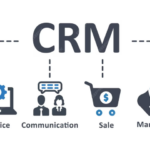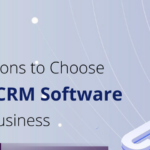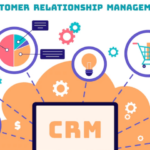Contents:
Liabilities are financial obligations a business owes to other persons, businesses and governments. Short-term liabilities are financial obligations that become due within a year, while long-term liabilities are due in a year or longer. A company’s total liabilities is the sum of its short-term and long-term liabilities. Liabilities are reported on a company’s balance sheet along with its assets and owners’ equity. A liability is a legally binding obligation payable to another entity.

When a company deposits cash with a bank, the bank records a liability on its balance sheet, representing the obligation to repay the depositor, usually on demand. Simultaneously, in accordance with the double-entry principle, the bank records the cash, itself, as an asset. The company, on the other hand, upon depositing the cash with the bank, records a decrease in its cash and a corresponding increase in its bank deposits . Liabilities are debts and obligations of the business they represent as creditor’s claim on business assets.
Except as provided by Subsection , a liability of the protected series or registered series for which the recourse of creditors is limited to specified property of the protected series or registered series. Except as provided by Subsection , the number of managers of a limited liability company consists of the number of initial managers listed in the company’s certificate of formation. A committee of the governing authority of a limited liability company may exercise the authority of the governing authority as provided by the resolution designating the committee. This title and the provisions of Title 1 applicable to a limited liability company to the extent that the company agreement does not provide for the management of the company. A conditional obligation of a member of a limited liability company under this section includes a contribution payable on a discretionary call of the limited liability company before the time the call occurs.
Non-Current (Long-Term) Liabilities
These liabilities are noncurrent, but the category is often defined as “long-term” in the balance sheet. Companies will use long-term debt for reasons like not wanting to eliminate cash reserves, so instead, they finance and put those funds to use in other lucrative ways, like high-return investments. A balance sheet reports your firm’s assets, liabilities, and equity as of a specific date. Any assets which personally belong to an owner or shareholder can’t be seized in order to repay the debt – therefore, the only potential loss is any capital that’s already been invested into the business. In the event of loss, any capital from the business would be seized, as could any personal assets that could contribute to covering the debt. Liabilities are debts or other obligations in which your business owes money, now or in the future.

Assets are items of value that your business owns, such as real estate and equipment. The equity section, which tells you how much you and other investors have invested in your business so far. The value of shares and ETFs bought through a share dealing account can fall as well as rise, which could mean getting back less than you originally put in. Liabilities are used by investors to estimate and compare companies’ performance.
Check out these basic accounting definitions and start to commit them to memory. That way, when you start your accounting education journey, you’ll already feel like you’re a step ahead and speaking the language. It’s time to roll up those sleeves and start building your accounting vocabulary. To help you get started, we compiled an assortment of basic financial terms and acronyms and created this simple accounting glossary for beginners. Loan loss provisions are used by banks and other lenders to set aside money for unpaid loans and loan payments. They can be used to cover bankruptcies, defaulted loans and loan restructurings that result in receipt of lower payments than originally expected.
Noncurrent assets
A responsibility to other parties that presupposes settlement by transfer or use of assets in future, provision of services or other transaction at a specified date or on demand. A type of borrowing from a bank or person to improve a business or personal income, which is payable at a predefined short or long period. When cash is deposited in a bank, the bank is said to “debit” its cash account, on the asset side, and “credit” its deposits account, on the liabilities side.
The following are examples of transactions and other events and circumstances that result in liabilities. Acquisition of commodities and services, governmental impositions, and acts by an enterprise requiring it to pay or otherwise sacrifice assets to settle its voluntary non-reciprocal transfers to owners and others. Assets and liabilities are key factors to making smarter decisions with your corporate finances and are often showcased in the balance sheet and other financial statements. Current liabilities are important because they can be used to determine how well a company is performing by whether or not they can afford to pay their current liabilities with the revenue generated.
Money owed to employees and sales tax that you collect from clients and need to send to the government are also liabilities common to small businesses. Liabilities are future sacrifices of economic benefits https://1investing.in/ that a company is required to make to other entities due to past events or past transactions. Total liabilities are the combined debts, both short- and long-term, that an individual or company owes.
Resources created by teachers for teachers
The point of a balance sheet is to map out the relationship between assets and liabilities—that’s what you’re trying to “balance”—to obtain a clear picture of your company’s net worth. Noncurrent liabilities.Noncurrent liabilities are long-term debts that your business must pay off over a longer period. Examples include long-term loans, like a mortgage or a business loan, deferred tax payments, or a long-term lease. Current liabilities.Current liabilities are short-term debts that you plan to pay off within a year, such as credit card balances, payroll taxes, accounts payable, or expenses you haven’t been invoiced for yet.
In the UK, a business can incorporate as a private unlimited company to maintain unlimited liability. Limited liability businesses are a popular business structure, as they allow business owners and partners to add a level of protection to their fiscal responsibility behind the business. Kristen has her Bachelor of Arts in Communication with certificates in finance, marketing, and graphic design. She is a small business contributing writer for a finance website, with prior management experience at a Fortune 100 company and experience as a web producer at a news station. She’s covered a variety of topics including news, business, entrepreneurship, music, and graphic design.
An assignee of a membership interest in a limited liability company is not liable as a member of the company until the assignee becomes a member of the company. This is the difference between an asset’s historical cost and the amount depreciated already. The fraction that hasn’t been amortized is a liability, but it’s merely an approximate estimate of the asset’s fair market value. This gives an analyst some insight into how aggressive or conservative a company’s depreciation techniques are.
- Balance sheets and income statements are invaluable tools to gauge…
- A tax provision is the money set aside by a business to pay its income taxes for the current period.
- The tools and resources you need to take your business to the next level.
- The limited liability company shall provide notice of the termination of a protected series or registered series in the manner provided in the company agreement for notice of termination, if any.
Adam received his master’s in economics from The New School for Social Research and his Ph.D. from the University of Wisconsin-Madison in sociology. He is a CFA charterholder as well as holding FINRA Series 7, 55 & 63 licenses. He currently researches and teaches economic sociology and the social studies of finance at the Hebrew University in Jerusalem.
An asset is anything a company owns of financial value, such as revenue . An example of an expense would be your monthly business cell phone bill. But if you’re locked into a contract, and you need to pay a cancellation fee to get out of it, this fee would be listed as a liability. In the U.S., only businesses in certain states have to collect sales tax, and rates vary.
Liability definition:
In business, the liabilities definition in accounting refers to the debts or financial obligations of the business which are owed out to others. Liabilities are the things that decrease a business’s value since they don’t own these items and they must be given out to other businesses or customers. Liabilities can take many forms, from money owed for operating expenses to bills incurred by the business to the inventory that is owed to customers. Some common examples of liabilities that are owed by a business include the salaries that are owed to employees, the products that are owed to customers, payments owed on a lease, and payments due to vendors for supplies.
Generally, liability refers to the state of being responsible for something, and this term can refer to any money or service owed to another party. Tax liability, for example, can refer to the property taxes that a homeowner owes to the municipal government or the income tax he owes to the federal government. When a retailer collects sales tax from a customer, they have a sales tax liability on their books until they remit those funds to the county/city/state. Provisions enable companies to set aside funds for future expected expenses when there’s a degree of uncertainty about the amount or timing of the expense. They help provide a clearer picture of a company’s finances, so companies can make better-informed decisions about future spending and business plans. Provisions enable companies to reflect the likely impact of future expenses or losses in situations where there is some uncertainty about the amount of the expense or its timing.
On a company’s balance sheet, assets are the difference between equity and liabilities . Recording a liability requires a debit to an asset or expense account , and a credit to the applicable liability account. When a liability is eventually settled, debit the liability account and credit the cash account from which the payment came. Current liabilities, also known as short-term liabilities, are financial responsibilities that the company expects to pay back within a year.
“Party to a merger” means a protected series or registered series that under a plan of merger is divided or combined by a merger. This section may not be construed to affect the obligation of a member to return a distribution to the protected series or registered series under the company agreement, liabilities meaning in commerce another agreement, or other state or federal law. A recovery in a direct or derivative proceeding by a member may be paid directly to the plaintiff or to the limited liability company if necessary to protect the interests of creditors or other members of the limited liability company.





7 Comments